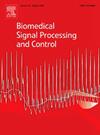Holographic convolutional attention neural network for motor imagery decoding based on EEG temporal–spatial frequency features
IF 4.9
2区 医学
Q1 ENGINEERING, BIOMEDICAL
引用次数: 0
Abstract
As brain–computer interface (BCI) technology advances, numerous researchers begin to employ deep learning techniques for the interpretation and categorization of electroencephalography (EEG) signals. Motor imagery brain–computer interface (MI-BCI) is a kind of technology to realize human–computer interaction by decoding EEG signal, which has a wide application prospect in the fields of neural rehabilitation and auxiliary equipment control. However, due to complexity and dynamic characteristics of EEG signals and interference of background noise, it remains a significant challenge to achieve high-precision and robust dynamic imagery classification. Traditional feature extraction methods tend to focus only on time-domain features or frequency-domain features, and rarely combine the two to analyze together. Traditional attention mechanisms are limited in capturing complex spatial–temporal dependencies and consume large computational resources. To solve these problems, we propose a holographic convolutional attention neural network based on temporal–spatial frequency features for motor imagery (MI) classification. Specifically, a convolutional filter bank is constructed to distill the temporal–spatial features of EEG signals, and then a frequency domain feature module based on fast fourier transform has been introduced to capture the frequency domain features of EEG signals, and then average pooling and variance pooling are used to capture different multimodal information. Subsequently, holographic convolution attention is designed to obtain local features through convolution operations, and then features are weighted and aggregated by attention weights, combined with context vectors, which can adaptively modulate the influence of individual local features on the overarching information, aiding the model in capturing the distant interdependencies between temporal and spatial dimensions. To assess the feasibility of the suggested approach, an extensive series of experiments is conducted using two publicly accessible datasets. The findings indicate that the mean performance of the suggested model in the BCIC-IV-2a four-classification reaches 80.59%, which is excellent to some current methods. The average classification accuracy of BCIC-IV-2b binary classification reaches 87.69%, which proves the validity of our model.
求助全文
约1分钟内获得全文
求助全文
来源期刊

Biomedical Signal Processing and Control
工程技术-工程:生物医学
CiteScore
9.80
自引率
13.70%
发文量
822
审稿时长
4 months
期刊介绍:
Biomedical Signal Processing and Control aims to provide a cross-disciplinary international forum for the interchange of information on research in the measurement and analysis of signals and images in clinical medicine and the biological sciences. Emphasis is placed on contributions dealing with the practical, applications-led research on the use of methods and devices in clinical diagnosis, patient monitoring and management.
Biomedical Signal Processing and Control reflects the main areas in which these methods are being used and developed at the interface of both engineering and clinical science. The scope of the journal is defined to include relevant review papers, technical notes, short communications and letters. Tutorial papers and special issues will also be published.
 求助内容:
求助内容: 应助结果提醒方式:
应助结果提醒方式:


